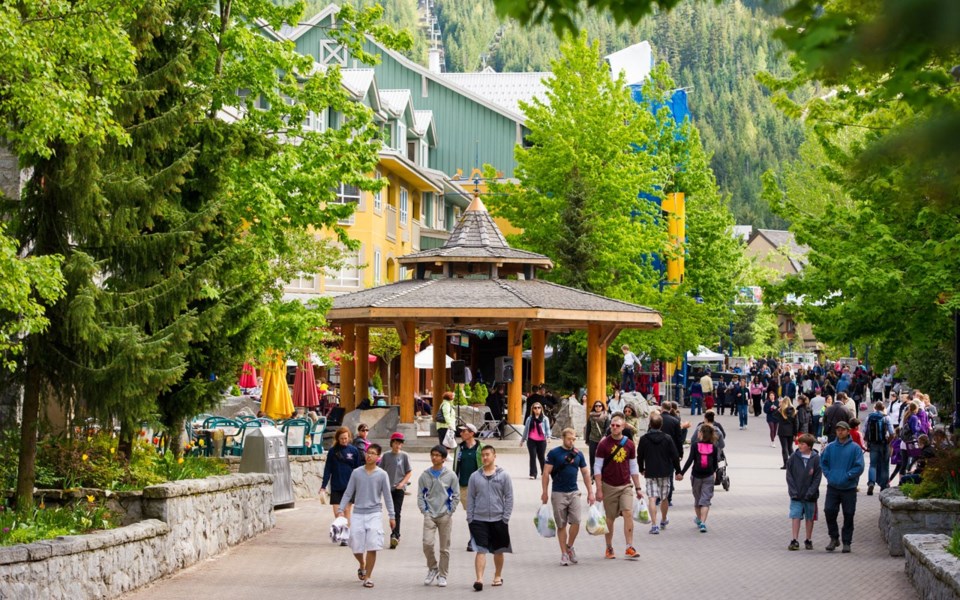While we have yet to see how Phase 2 of B.C.'s post-COVID-19 re-opening plan will impact the number of people who come down with the virus, we have been given a glimpse of what lies in store for tourism.
There is pent-up demand for getaways from B.C. residents, but there is also concern from destination resorts about how to handle the visitors.
It's not as simple as "wash your hands and cover your nose and mouth if you sneeze" when it comes to planning for and catering to tourists.
And for their part, while many visitors might want to enjoy the Valley Trail or other hikes and walks in nature, they might be uncertain about booking an adventure outing or enjoying lunch on a patio.
This "new normal" for tourism is going to take time to adapt to and provide enough income for those associated with the sector to stay in business.
Here in Whistler, it is likely that we will also face the complication of staffing shortages, with many of our seasonal workers gone and, so far, few arriving to replace them.
Over the last several days, government officials took advantage of Tourism Week (May 24 to 31) to announce aid for the sector as it has become abundantly clear over the last few months that tourism is in its own stratosphere when it comes to the fallout of COVID-19.
Federal tourism minister Melanie Joly said last month that Chinese tourists visiting Canada accounts for an average of $2 billion in tourism revenue each year, and the current downturn is forecasted to result in a loss of $550 million by this month, for example.
Canada's travel and tourism industry is a $102-billion sector, accounting for 2.1 per cent of the country's GDP.
One out of every 11 jobs in Canada is directly involved with travellers, and the sector employs 1.8 million workers across the country, split between travel services, accommodation, recreation, entertainment, transportation, and food and beverage industries.
Prior to the pandemic, Canada welcomed more than 57,000 international overnight visitors to the country every day.
In a recent report prepared for Destination Canada (a federal Crown agency that markets Canada internationally) on the impact of the pandemic on domestic Canadian travel, Tourism Economics found that traveller spending could fall anywhere from $54.9 billion to $34.8 billion in 2020, representing drops of 33 per cent and 58 per cent, respectively.
Since COVID-19-related shutdowns began, tourism employment has decreased by 881,700, or 43.3 per cent (to the end of April).
These are sobering numbers, which have not improved in May, and are made all the more grave considering that 2019 marked the third year in a row of record-breaking visitation to Canada. While we welcomed visitors from all over the world last year, nearly 15 million Americans visited Canada—the sixth consecutive year of growth since 2014 and the highest level since 2004.
With B.C.'s premier John Horgan in sync with the federal decision to keep borders closed to travellers, there is no way we will see anything like this number of U.S. visitors. Indeed, even when the border does open, American travellers will likely be very cautious about making international holiday plans (on the other hand, maybe they will be fleeing America!).
This weekend, the federal government recognized the climb tourism is facing in recovery, fully turning the focus within our own borders. Marketing money from Ottawa, about $30 million, is being re-directed away from international to Canada-first marketing campaigns through Destination Canada—it is the first time the Crown agency has provided funding for domestic marketing.
"A lot of people who have lost their jobs are in the tourism sector right now and the entire idea right now is to save the summer, but to save the summer differently," Joly told The Canadian Press in a May 31 interview.
"There's an entire movement across the country to shop locally. We see that people want to discover or support even more their local businesses ... Well, I would add to that a new movement: visit local. And rediscover your beautiful city and your region."
Last week, leaders from across Canada's tourism industry announced the creation of a new roundtable while calling for talks with the government around the easing of travel restrictions and mandatory quarantines to prevent long-term damage to the sector, and sending a letter to Prime Minister Justin Trudeau outlining their concerns.
"We propose to work closely with the federal government to responsibly take the necessary steps, including additional bio-security measures if appropriate, to ensure that the upcoming summer travel season is not entirely lost," the letter reads.
"The highly restrictive measures in place today are not sustainable. Like the government, we want to avoid a second wave of the virus and are certain reasonable measures can be taken to help mitigate risk."
Whistler, as a one-industry town, is at the epicentre of the trauma tourism has faced from COVID-19.
It goes without saying that we don't want to be the centre of a virus outbreak, but with the continuing strong leadership from those at Tourism Whistler and our businesses through the Chamber of Commerce, we can successfully welcome guests this summer and keep our community safe and supported as well.




